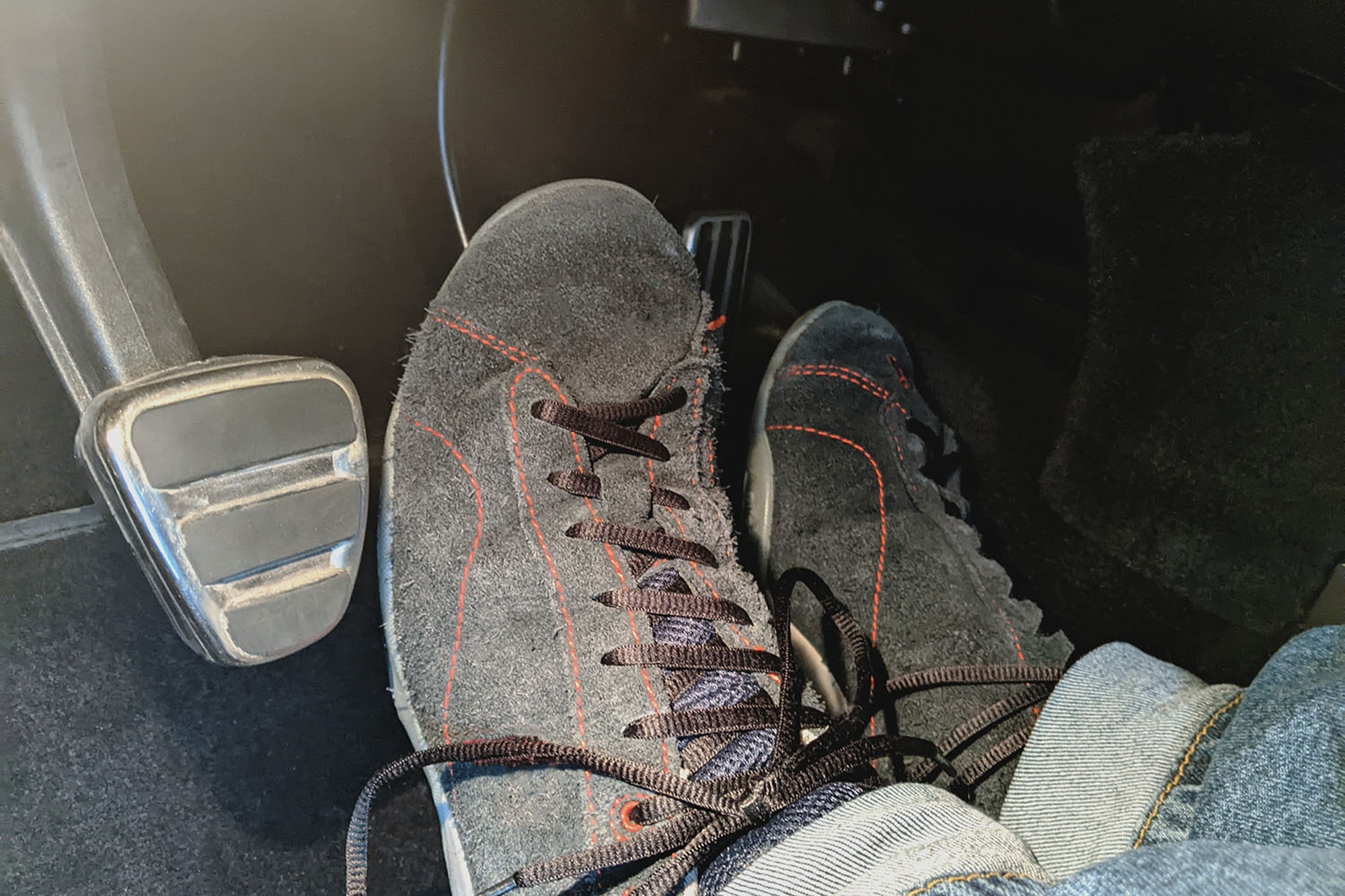What Is Left-Foot Braking, and When Should You Use It?
Hint: it’s not braking with your right foot.
 Aaron Miller/Capital One
Aaron Miller/Capital One
Left-foot braking is as straightforward as it sounds: instead of using your right foot to press the brake pedal, you use your left. It’s not something we’re taught in driver’s ed. So when, if ever, should you do it? We address that question and more.
Advantages of Left-Foot Braking
Left-foot braking benefits those who want to save a very small amount of time, better control the weight transfer of the car, and keep up their speed. The typical driver can make it through life without knowing how to do it, but it’s a useful (if not necessary) skill for racers to hone.
That’s because in a race, even the tiniest time difference can matter. And it takes a driver less time to apply the brakes if their left foot is hovering over the pedal than it does to move their right foot from the accelerator to the brake.
Then there’s the matter of smoothness. Let’s go back to physics class for a moment. When a car accelerates, the weight shifts toward the back of the vehicle. Lifting off the accelerator results in the car transitioning to a more neutral posture. And braking causes the weight to shift forward and the nose of the car to dive. In racing, these transitional movements can create traction issues, sacrificing speed, time, and potentially control. On the street it’s less of a concern, but it can still result in some head bobbing. Applying the brake with your left foot before or while lifting off the accelerator can soften the sharpness of this weight transfer, but it’s a fine art to master.
Lastly, when you’re on a road course, you’ll have to brake for turns but you’ll want to minimize how much speed you lose in those moments. Left-foot braking helps you do that as your right foot can remain on the accelerator and keep the power going — even while you’re slowing.
When to Use Left-Foot Braking
As indicated above, left-foot braking is most beneficial for race-car drivers looking to make the best time. But even if you’re not Richard Petty, this skill can help you with smoothness and reaction time in everyday driving, especially during heavy traffic when you’re on and off the accelerator many times.
Additionally, if you like to drive where the blacktop ends, many off-roaders use left-foot braking to help with weight transfer, the timing of forward momentum, and the reduction of “roll back” on steep inclines.
Why Aren’t We Taught to Left-Foot Brake?
There are a couple of reasons why we learn to operate the accelerator and brake pedal with the same foot. The first is that back in the day, most cars had manual transmissions and the driver would need to regularly use their left foot to engage the clutch. But even as automatics began to take over, driving instruction remained the same. That’s because of reason number two: right-foot braking is simpler, and many people fear that, by left-foot braking, a driver could mistakenly apply the wrong pedal in an emergency situation. While we’ve found no laws prohibiting left-foot braking, if you get confused and press the wrong pedal during a driving test, the examiner could consider this a dangerous action and fail you.
How to Learn to Left-Foot Brake
If you’re into doing the dance, the best way to practice left-foot braking is in an empty and open lot. Make sure you rest your left heel on the floorboard both for support and so you can modulate the pressure from a reference point. With your right foot off the accelerator, gently apply pressure to the brake pedal with your left, taking care to recognize where the brakes begin to bite. It will take time to get the feel for it. Patience is essential.
Written by humans.
Edited by humans.
 Jon Yanca
Jon YancaTo say cars have been a lifelong passion for Jon Yanca would be an understatement. Obsession is probably more fitting. He brings over 15 years of automotive-industry experience spanning from top enthusiast publications, to advertising and marketing, to independent auto repair. When Jon is not writing about cars, you'll find him racing on dirt, pavement, and even ice, or with a wrench in hand maintaining his fleet of vehicles.
Related articles
View more related articles